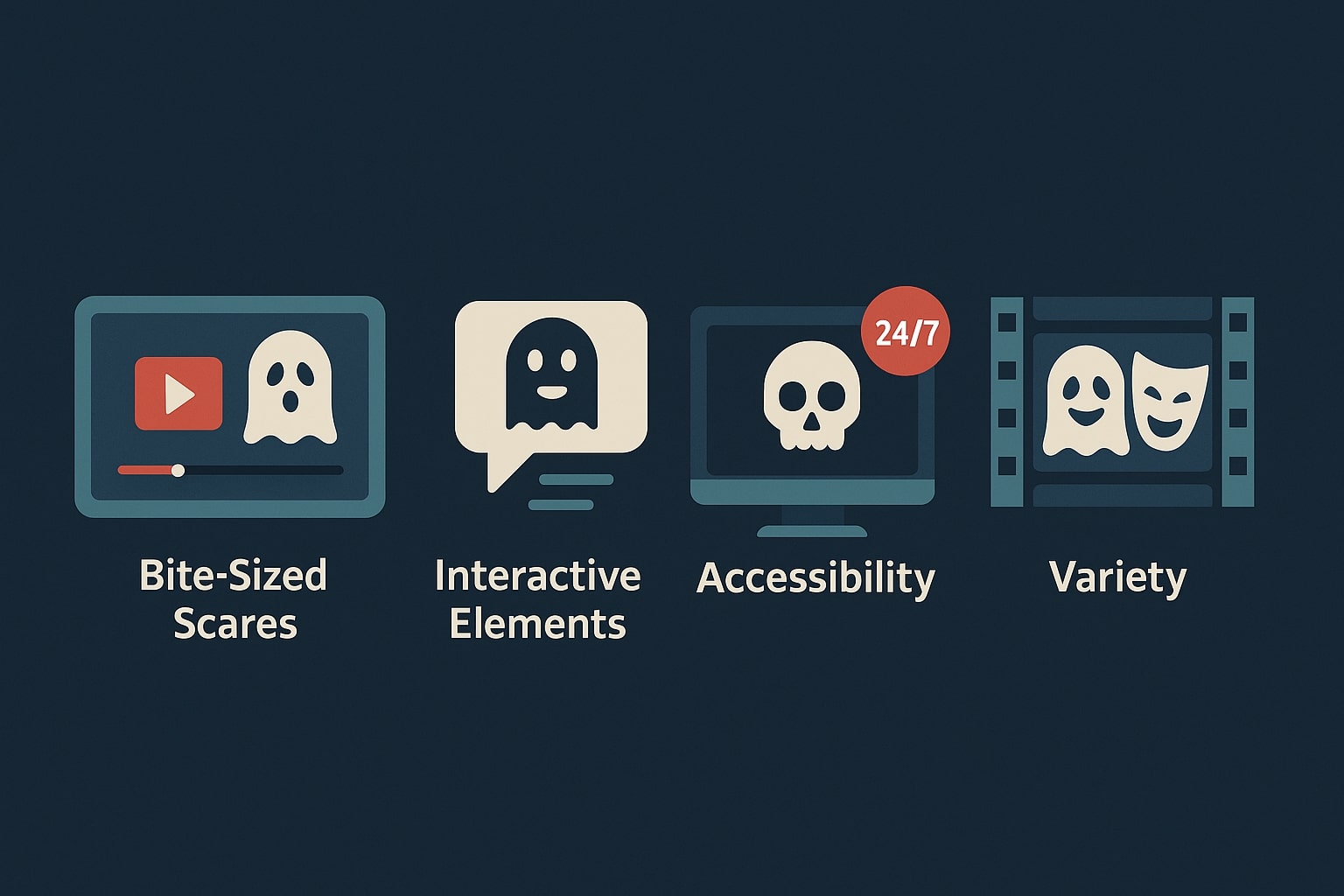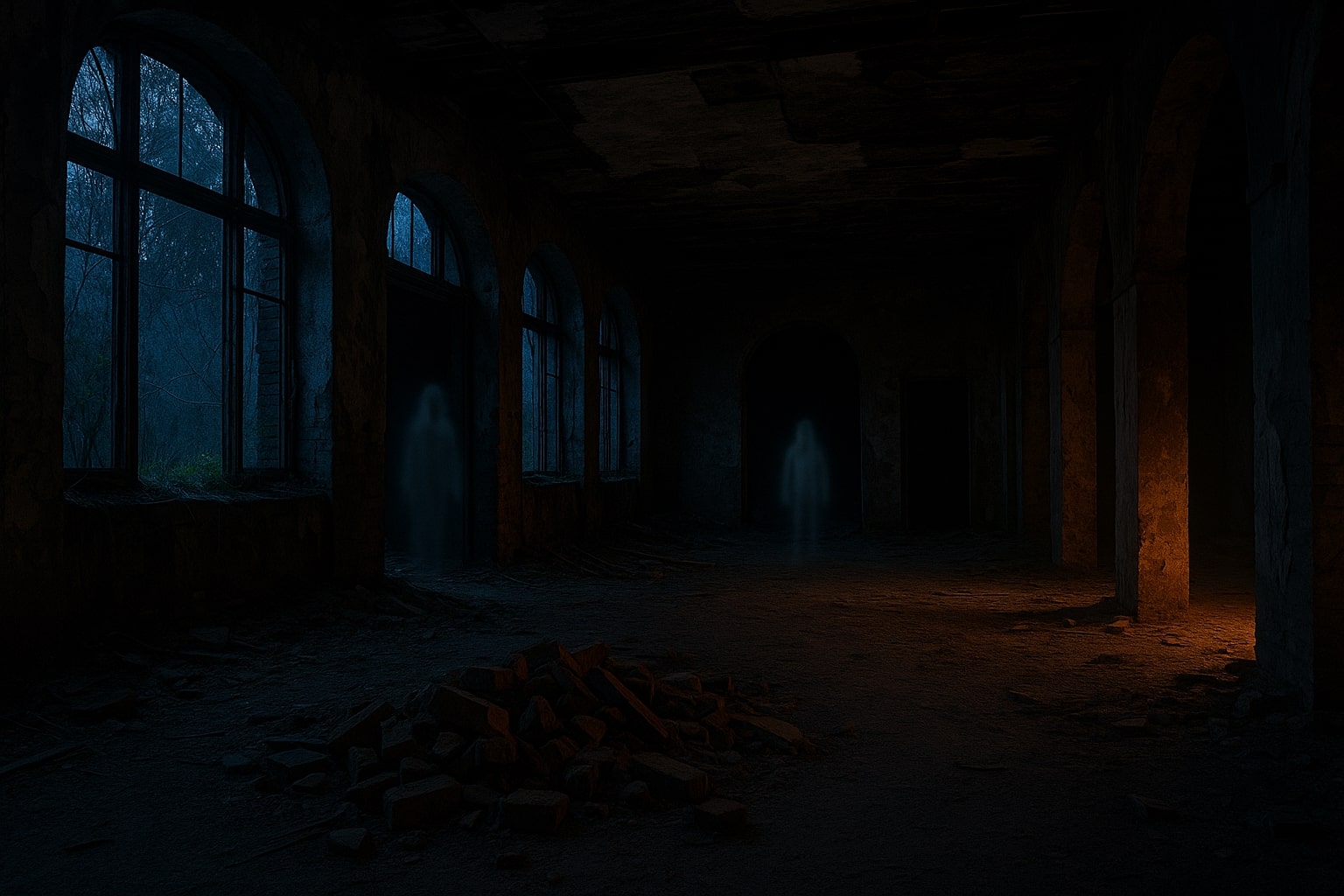Digital Ghost Stories: Why Abandoned Places and Paranormal Videos Captivate Our Screens
There's something about a grainy video of an empty building that can send chills down your spine faster than any Hollywood horror movie. In the age of high-definition everything, we're paradoxically drawn to low-quality, shaky-cam footage of things that go bump in the night. Why do these digital ghost stories captivate us so completely?
The Allure of Abandoned Spaces
Abandoned places hold a unique fascination because they represent stories interrupted. Creepy Abandoned Theme Parks showcases some of the most haunting examples — places that were once filled with joy and laughter, now reclaimed by nature and silence.
These locations are particularly powerful because they subvert our expectations. Theme parks are supposed to be happy places, symbols of childhood wonder and family fun. When they're abandoned, that cheerful facade becomes deeply unsettling. The faded paint, rusted rides, and overgrown pathways tell stories of dreams deferred and economies collapsed.
The Psychology of Paranormal Entertainment
Why do we actively seek out content that's designed to scare us? Psychologists have identified several reasons:
Controlled Fear: Watching scary content from the safety of our homes gives us the adrenaline rush of fear without actual danger
Social Bonding: Shared scares create connections — we bond over what frightened us
Curiosity Satisfaction: These videos explore places and experiences most of us will never encounter
Meaning-Making: Ghost stories help us process concepts like death, loss, and the unknown
The Authenticity Question
One of the most compelling aspects of digital ghost stories is their claim to authenticity. Ghost Videos That Look Real explores footage that's convincing enough to make even skeptics pause. The grainy quality, shaky cameras, and apparent spontaneity all contribute to their believability.
But here's the fascinating part: it doesn't really matter if they're real or not. The emotional impact comes from the possibility, not the proof. These videos tap into our primal fear of the unknown and our desire to believe there's more to existence than what we can see.
Real Mystery, Real Fear
Some of the most chilling content comes from real, unsolved mysteries. Mysterious Disappearances in National Parks delves into cases where people vanished without a trace in places that should be safe and well-monitored.
These stories are terrifying precisely because they're true. No ghosts or supernatural elements needed — just the stark reality that sometimes people disappear and we never find out why. The vast wilderness, the gaps in surveillance, the sheer impossibility of vanishing completely in the modern age all combine to create genuine unease.
The Evolution of Horror Content

Digital platforms have transformed how we consume scary content:
Bite-Sized Scares: Instead of 90-minute movies, we get 5-minute videos that deliver quick thrills
Interactive Elements: Comments sections become part of the experience, with viewers sharing their own stories and interpretations
Accessibility: Horror content is no longer gated by ratings or theater releases — it's available 24/7
Variety: From serious paranormal investigations to comedy-horror mashups, there's something for every scare tolerance level
The Architecture of Digital Fear
Successful scary videos often follow similar patterns:
- Normal Setup: Everything starts ordinary and safe
- Subtle Wrongness: Small details that seem "off"
- Building Tension: Gradual escalation of strange events
- The Reveal: Whether it's a jump scare or disturbing discovery
- Lingering Questions: Ambiguous endings that stick with you
Cultural Impact of Abandoned Places
Abandoned places serve as unintentional time capsules, preserving moments in cultural history. An abandoned mall from the 1980s captures not just architecture but entire aesthetic movements, social patterns, and economic systems.
These spaces become archaeological sites for recent history, more relatable than ancient ruins but just as revealing about the societies that created them.
The Comfort of Controlled Chaos
In our increasingly connected and monitored world, abandoned places represent the opposite — spaces where anything could happen because no one's watching. They're digital campfires around which we gather to tell ghost stories, safely removed from actual danger but close enough to feel the thrill.
The Role of Technology
Ironically, our most advanced technology is often used to explore our most primitive fears. Night vision cameras, electromagnetic field detectors, and audio enhancement software have become standard tools for paranormal investigators, creating a fascinating blend of cutting-edge tech and ancient superstition.
Community and Shared Experience
These videos create communities of viewers who share theories, debunk explanations, and support each other through the scares. The comment sections become secondary entertainment, full of people sharing their own encounters, rational explanations, or requests for more content.
The Ethics of Exploration
There's an ongoing conversation about the ethics of exploring abandoned places — issues of trespassing, safety, historical preservation, and respect for tragedy. The best content creators navigate these concerns thoughtfully, often partnering with local authorities or historians.
What Fear Teaches Us
Engaging with scary content in a controlled environment can actually be beneficial:
- It helps us process anxiety in manageable doses
- It builds resilience and coping mechanisms
- It satisfies our curiosity about mortality and the unknown
- It creates empathy for others' fears and experiences
The Future of Digital Horror
As technology advances, digital ghost stories will likely become more immersive. Virtual reality abandoned place tours, AI-generated ghost stories, and interactive paranormal experiences are already emerging. But the core appeal will remain the same: our fundamental fascination with mystery, mortality, and the spaces where normal rules don't apply.
Finding Beauty in Decay
Perhaps the most surprising aspect of abandoned place content is how often it's genuinely beautiful. Nature reclaiming human structures, the play of light through broken windows, the artistic arrangement of decay — these videos often function as accidental art installations.
They remind us that entropy isn't just destruction; it's transformation. Every ending contains the seeds of something new.
In our digital age, ghost stories haven't disappeared — they've just found new haunted houses in pixels and bandwidth.
